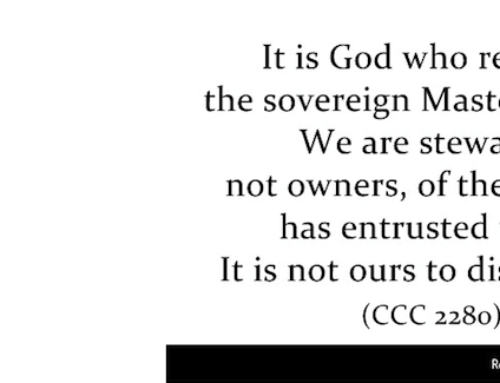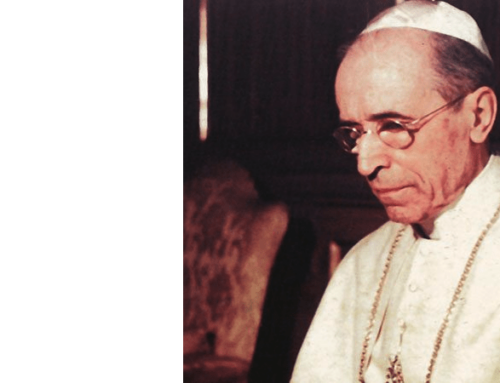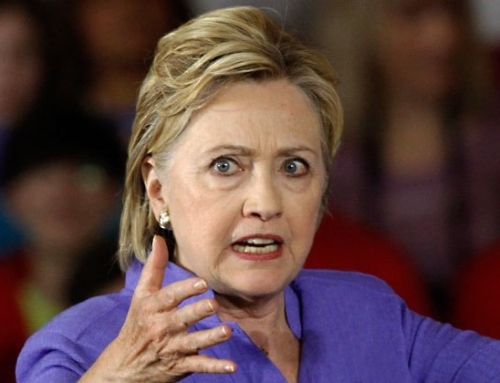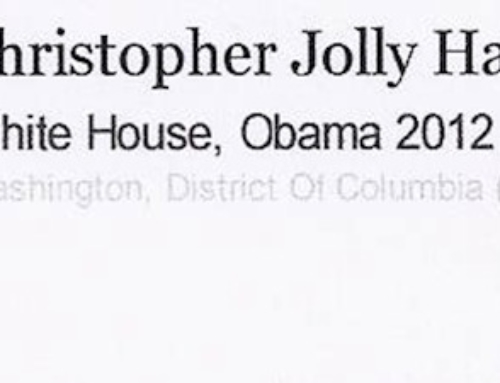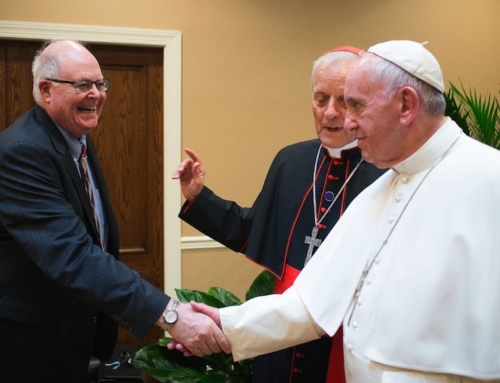by Robert P. Lockwood
(Catalyst 4/2001)
Most of the myths surrounding the Inquisition have come to us wrapped in the cloak of the Spanish Inquisition. It is the world of Edgar Allen Poe’sThe Pit and the Pendulum, with vivid descriptions of burning heretics, ghastly engines of torture with innocent Bible-believers martyred for their faith. In many ways, the reality of the Spanish Inquisition has its own human tragedies, but it is not the tragedy presented in the common caricatures.
It is a curiosity of history that the medieval Inquisition of the 13th and 14thcenturies was little utilized in Spain. It was only after the mid-fifteenth century that the Spanish Inquisition would develop, and its target would not be heretics in any traditional sense, but rather those whose Jewish ancestors had converted to Christianity and were accused of secretly practicing their old faith. To many contemporary historians of the Spanish Inquisition, the story unfolds not as a “religious” persecution, but rather a racial pogrom.
Spain was unique in Western Europe for the diversity of its population. In addition to a large segment of Muslims, medieval Spain had the single largest Jewish community in the world, numbering some one hundred thousand souls in the 13th Century. For centuries Jews and Christians had lived and worked together in a more or less peaceful though generally segregated co-existence.
In the 14th Century, however, anti-Jewish attitudes were on the rise throughout Europe. In 1290, England expelled its Jews and France followed in 1306. Spain began to experience an increasing anti-Jewish sentiment. It exploded in the summer of 1391 with angry anti-Jewish riots. These riots led to major forced conversions of Jews to Christianity. These Jewish converts would be called conversos or New Christians, to distinguish them from traditional Christian families. The converso identity would remain with such families for generations.
To the converso families, such conversions were not without benefit. They were welcomed into a full participation in Spanish society and they would soon become leaders in government, science, business and the Church. Over the years the Old Christians saw these converso families as opportunists who secretly maintained the faith of their forefathers. It was a strong mixture of racial prejudice against the conversos that would stir-up the Spanish Inquisition.
Spain in the 15th century was in the process of unifying the two traditional kingdoms of Castile and Aragon, while engaging in the final defeat of the Muslim stronghold of Granada. Isabella of Castile had married Frederick of Aragon in 1469. She came to the throne in 1474. When Ferdinand became king of Aragon in 1479, the two kingdoms were effectively united. War was waged with Granada beginning in 1482, with its final defeat coming 10 years later.
In his book “The Spanish Inquisition: A Historical Revision” (Yale University Press) Henry Kamen writes, “From the mid-Fifteenth Century on, religious anti-Semitism changed into ethnic anti-Semitism, with little difference seen between Jews and conversos except for the fact that conversos were regarded as worse than Jews because, as ostensible Christians, they had acquired privileges and positions that were denied to Jews. The result of this new ethnic anti-Semitism was the invocation of an inquisition to ferret out the false conversos who had, by becoming formal Christians, placed themselves under its authority.”
In 1478, Ferdinand and Isabella requested a papal bull establishing an inquisition, a bull granted by Pope Sixtus IV. In 1482 the size of the inquisition was expanded and included the Dominican Friar Tomas de Torquemada, though Pope Sixtus IV protested against the activities of the inquisition in Aragon and its treatment of the conversos. The next year, Ferdinand and Isabella established a state council to administer the Inquisition with Torquemada as its president. He would later assume the title of Inquisitor-General.
This allowed the inquisition to persist well beyond its initial intention. The papacy would continue to complain about the treatment of the conversos, but the unity of the Spanish Inquisition with the State would remain a distinguishing characteristic, and a primary source of post-Reformation European hatred.
The stated reason for the inquisition was to root out “false” conversos. There seems to have been an allure to the claim that many conversos secretly practiced their old Jewish faith and, as such, were undermining the Faith. For centuries, such legends would persist in Spain, though most evidence shows that there were few “secret” Judaizers and that most conversos, particularly after the first generation of forced conversions, were faithful Catholics.
In March, 1492, Isabella and Ferdinand ordered the expulsion – or conversion – of all remaining Jews in their joint kingdoms. The purpose of the declaration was more religious than racial, as Jewish conversion rather than expulsion was certainly the intent. While many Jews fled, a large number converted, thus aggravating the popular picture of secret Judaizers within the Christian community of Spain. Up through 1530, the primary activity of the inquisition in Spain would be aimed at pursuing conversos. The same would be true from 1650 to 1720.
The Spanish Inquisition had been universally established in Spain a few years prior to the expulsion of the Jews in 1492. Records show that virtually the only “heresy” prosecuted at that time was the alleged secret practice of the Jewish faith. Through 1530, it is estimated that approximately 2,000 “heretics” were turned over to the secular authorities for execution. Many of those convicted of heresy were conversos who had already fled Spain. These were burned in effigy.
The most famous period of the Spanish Inquisition, under the legendary Torquemada, had little to do with the common caricature of simple “bible-believing” Protestants torn apart by ruthless churchmen. The true picture is unsettling enough: it was a government-controlled inquisition aimed at faithful Catholics of Jewish ancestry. The papacy, under Sixtus IV (1471-1484) and Innocent VIII (1484-1492), rather than controlling the Spanish Inquisition, protested its unfair treatment of the conversos with little result.
With the outbreak of Luther’s Reformation in Europe and the spread of its ideas in the 1520s, the Inquisition was entrenched to protect Spain from Protestant “infiltration” and as a further means to buttress the royal power of Charles V, the successor to Ferdinand and Isabella.
The Reformation would have little impact in Spain. As Kamen explains: “Unlike England, France and Germany, Spain had not since the early Middle Ages experienced a single significant popular heresy. All its ideological struggles since the Reconquest had been directed against the minority religions, Judaism and Islam. There were consequently no native heresies (like Wycliffism in England) on which German ideas could build.”
The image of a Spanish Inquisition burning hundreds of thousands of Protestant heretics has no basis in historical fact. There were so few Protestants in Spain that there could be no such prosecution. During the Reformation period, the inquisition in Spain certainly searched for evidence of Protestantism, particularly among the educated classes. But before 1558 possibly less than 50 cases of alleged Lutheranism among Spaniards came to the notice of the inquisitors.
The discovery of a small cell of Protestants – about 120 – in late 1550s, however, generated concern in the highest quarters in Spain. Charles V from his monastery retirement wrote in an infamous letter to his regent daughter Juana that so “great an evil” must be “suppressed and remedied without distinction of persons from the very beginning.” Though Spain braced for a tidal wave of revelations and discoveries – with finger-pointing and accusations of pseudo-Protestants everywhere – in all, just over 100 persons in Spain were found to be Protestants and turned over to the secular authorities for execution in the 1560s.
In the last decades of the century, an additional 200 Spaniards were accused of being followers of Luther. “Most of them were in no sense Protestants…Irreligious sentiments, drunken mockery, anticlerical expressions, were all captiously classified by the inquisitors (or by those who denounced the cases) as ‘Lutheran.’ Disrespect to church images, and eating meat on forbidden days, were taken as signs of heresy,” Kamen reports.
The last major outburst in activity of the Spanish Inquisition was aimed once again at alleged Judaizing among conversos in the 1720s. The Inquisition was formally ended by the monarchy in 1834, though it had effectively come to an end years prior.
Edward Peters in “Inquisition” (University of California Press, Berkeley and Los Angeles, CA, 1989) explains how the myth of the all-embracing inquisition developed in European thought. The creation of the myth of the Inquisition was tied to the creation of an image of a Catholic Spain in the consciousness of the West. “An image of Spain circulated through late sixteenth-century Europe, borne by means of political and religious propaganda that blackened the characters of Spaniards and their rulers to such an extent that Spain became the symbol of all forces of repression, brutality, religious and political intolerance, and intellectual and artistic backwardness for the next four centuries. Spaniards and Hispanophiles have termed this process and the image that resulted from it as ‘The Black Legend,’ la leyenda negra.” It is this post-Reformation anti-Catholic “black legend” that created the myths surrounding the Spanish Inquisition. Serious historical studies in the 20th Century have debunked these myths, but they continue to persist in popular imagination.


